Hypnos: God Of Sleep Who Owns Much Of Our Lives In Greek Mythology
A. Sutherland - AncientPages.com - In "Theogony," a Greek poet Hesiod who likely lived around 700 BC, tells about Hypnos, the god of sleep, and his twin brother, Thanatos, the god of death, who the Greeks occasionally saw as a harbinger of a peaceful death. Their parents were Nyx, the goddess of the night, and Erebus, the god of darkness.
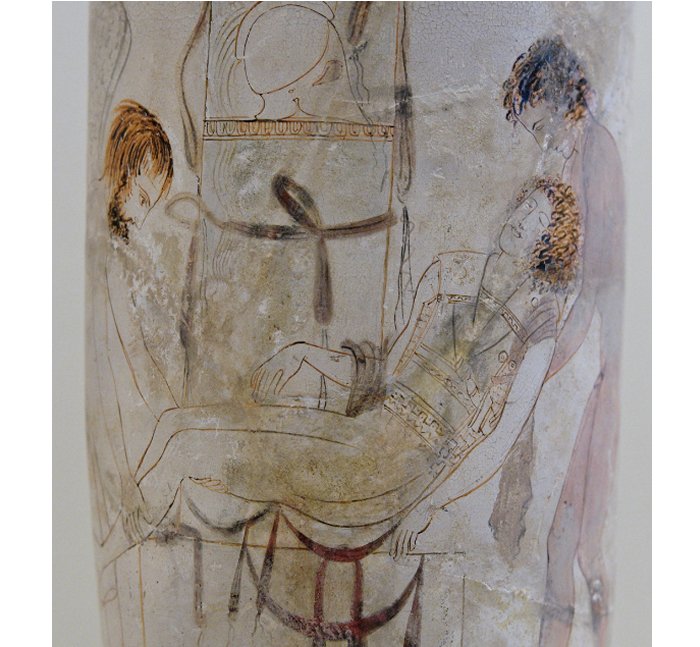 Hypnos and Thanatos carrying the body of Sarpedon from the battlefield of Troy; detail from an Attic white-ground lekythos, ca. 440 BC. source
Hypnos and Thanatos carrying the body of Sarpedon from the battlefield of Troy; detail from an Attic white-ground lekythos, ca. 440 BC. source
The two divine brothers work in good cooperation, and together, they successfully help humans avoid unnecessary suffering and die peacefully during sleep. Hypnos masters people's dreams and owns half of their lives, watching over men's dreams and above all over the gods' dreaming.
Homeric sleep – pleasant but sometimes dangerous
In the "Iliad," Homeric sleep is a good, sweet, and pleasant thing. It brings rest to the exhausted body and brain and helps to forget sorrows.
But sometimes, sleep can also be dangerous when it occurs at the wrong time and place, especially when action is urgently needed. Patroclus, the friend of Achilles, puts on his armor and commands the Myrmidons in a battle against the Trojans. Sadly, he is slain by Hector, one of King Priam's sons. Then, the ghost of Patroclus reproaches Achilles for forgetting his duties towards his dead friend.
In "The Iliad," Homer (c. 800 -c. 701 BC) wrote that to prevent Zeus from joining the Trojan War, Hypnos put Zeus to sleep. Strongly influenced by the goddess Hera's power of persuasion, he did what she wanted. Hera and Thanatos could then bring the body of Sarpedon back to his native Lydia. Sarpedon was a Lycian prince and a hero in the Trojan War, killed before Troy's gates in the battle against the Greeks.
Hypnos successfully outmaneuvered Zeus, and it certainly was a desirable deed, but soon, the father of the gods woke up and knew that he was fooled. He could not even punish Hypnos because "the guilty" already arranged his escape to avoid Zeus' anger and hid in his mother's underworld cave.
Hypnos was usually depicted as a young winged man or boy holding poppy flowers in his hand (or in his hair) and an opium horn.
Among other elements related to Hypnos and his work is an opium horn, which allows him to induce sleep in people.
Hypnos was the God of sleep in Greek mythology. Credit: Adobe Stock - matiasdelcarmine
Tradition has it that he lives in a big cave palace in the underworld. Around his home entrance, grow beautiful poppies and other sleep-inducing plants. Around the cave flows the river Lethe ("Forgetfulness"), one of Hades' underworld's five rivers. Homer's version, the master of people's and gods' dreams, lives on Lemnos, his private dream-island.
He never sets his eyes on the sun, and the night is his kingdom.
The Greeks believed that the consequence of the Hypnos' appearance was the spreading of sleep-weariness, after which came the time of peaceful sleep. Everybody respected Hypnos, and none of the deities (much less human beings) could resist his great power.
Selene, Endymion and Hypnos
An important role plays Hypnos in the tale of Selene and Endymion.
In myth, Endymion is a shepherd who admires the night sky and the moon goddess Selene. Selene falls in love with a handsome boy and often watches over him while he sleeps.
Endymion wanted her love to stay that way forever, but there were problems because Zeus did not want to make Endymion immortal, so Hypnos gave him the power to sleep with his eyes open. From now on, Endymion could constantly watch Selene moving across the night sky.
There was also another reason why Hypnos agreed to give him eternal sleep. The god himself could forever look into Endymion's beautiful eyes and handsome face, and so could Selene.
Legend says that Hypnos travels far and wide across the land and sea with fantastic speed and touches the person's forehead in question with a branch or drops on the eyes, the liquid he carries in his horn of opium.
Three sons of Hypnos
It is believed that he had many sons (the Oneroi), but only three of them are considered as gods of dreams: the first is Morpheus, the assistant of his father Hypnos), delivers dreams to all, but with extreme caution applying the dreams of kings and heroes.
Phobetor appears in dreams "in the form of beast or bird or the long serpent" and delivers terrible dreams, can be a source of phobia), and Phantasos is responsible for surreal dreams or fantasy.
All of them still influence our dreams that can be frightening or pleasant, or good and bad. Humans dream, and so do animals because Hypnos and his sons own much of our lives and are with us forever.
Written by – A. Sutherland - AncientPages.com Senior Staff Writer
Copyright © AncientPages.com All rights reserved. This material may not be published, broadcast, rewritten or redistributed in whole or part without the express written permission of AncientPages.com
Expand for referencesReferences:
STAFFORD, EMMA J. "ASPECTS OF SLEEP IN HELLENISTIC SCULPTURE" Bulletin of the Institute of Classical Studies, no. 38 (1991): 105-20.
Cotterell, Arthur. A Dictionary of World
More From Ancient Pages
-
 7,000-Year-Old Native American Underwater Burial Site Discovered Off The Coast Of Florida
Archaeology | Mar 3, 2018
7,000-Year-Old Native American Underwater Burial Site Discovered Off The Coast Of Florida
Archaeology | Mar 3, 2018 -
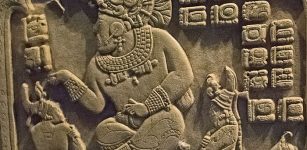 Fall Of The Ancient Maya Civilization Not Caused By Climate Change And Environmental Degradation – Scientists Say
Archaeology | Nov 18, 2021
Fall Of The Ancient Maya Civilization Not Caused By Climate Change And Environmental Degradation – Scientists Say
Archaeology | Nov 18, 2021 -
 Queen Elizabeth I Was Identified As Author Of Tacitus’s Annales Translation
News | Dec 1, 2019
Queen Elizabeth I Was Identified As Author Of Tacitus’s Annales Translation
News | Dec 1, 2019 -
 Submerged Wreck Of Mayan Slave Ship Identified By INAH Researchers
Archaeology | Sep 23, 2020
Submerged Wreck Of Mayan Slave Ship Identified By INAH Researchers
Archaeology | Sep 23, 2020 -
 3,000-Year-Old Fortress Built By The Mysterious Votadini Tribe Discovered On Top Of Arthur’s Seat
Archaeology | Sep 11, 2020
3,000-Year-Old Fortress Built By The Mysterious Votadini Tribe Discovered On Top Of Arthur’s Seat
Archaeology | Sep 11, 2020 -
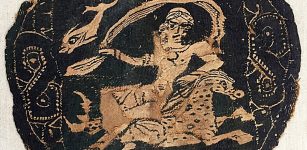 85 Beautiful And Rare Coptic Textiles – A Gift To Museum At Queens College
Archaeology | Apr 4, 2017
85 Beautiful And Rare Coptic Textiles – A Gift To Museum At Queens College
Archaeology | Apr 4, 2017 -
 Mysterious Ancient European Civilization – Puzzling Mysterious Ancient European Civilization – Part 2
Ancient Mysteries | Oct 23, 2019
Mysterious Ancient European Civilization – Puzzling Mysterious Ancient European Civilization – Part 2
Ancient Mysteries | Oct 23, 2019 -
 Mediterranean Sea Was Hotter 2,000 Years Ago And Contributed To The Fall Of The Roman Empire
Archaeology | Jul 27, 2020
Mediterranean Sea Was Hotter 2,000 Years Ago And Contributed To The Fall Of The Roman Empire
Archaeology | Jul 27, 2020 -
 Murder Of Duke Béla Of Macsó: A 700-Year-Old Archaeological Mystery
Archaeology | Nov 24, 2025
Murder Of Duke Béla Of Macsó: A 700-Year-Old Archaeological Mystery
Archaeology | Nov 24, 2025 -
 Ancient Solar Eclipses That Re-Wrote History And Made Ever-Lasting Impact On Humans
Featured Stories | Aug 15, 2017
Ancient Solar Eclipses That Re-Wrote History And Made Ever-Lasting Impact On Humans
Featured Stories | Aug 15, 2017 -
 Earliest Evidence Of Flip Flops In The Middle Stone Age
Archaeology | Oct 27, 2023
Earliest Evidence Of Flip Flops In The Middle Stone Age
Archaeology | Oct 27, 2023 -
 Extraordinary Discovery Of 2,000-Year-Old Bronze Statue Rewrites Etruscan-Roman History
Archaeology | Nov 8, 2022
Extraordinary Discovery Of 2,000-Year-Old Bronze Statue Rewrites Etruscan-Roman History
Archaeology | Nov 8, 2022 -
 Ancient Stepwells Of India: Symbol Of Sacred Water And Boundary Between Heaven And Earth
Civilizations | Jan 11, 2019
Ancient Stepwells Of India: Symbol Of Sacred Water And Boundary Between Heaven And Earth
Civilizations | Jan 11, 2019 -
 Dangerous Anomaly Inside Mysterious European Mountain Remains Unexplained – Examining Evidence – Part 2
Ancient Mysteries | Mar 17, 2021
Dangerous Anomaly Inside Mysterious European Mountain Remains Unexplained – Examining Evidence – Part 2
Ancient Mysteries | Mar 17, 2021 -
![Horses in the Eurasian steppes: Already 5000 years ago, they served pastoralists as a source of milk and a means of… [more] © A. Senokosov](https://www.ancientpages.com/wp-content/uploads/2021/09/pastoraliststeppe15-307x150.jpg) Milk Enabled Massive Steppe Migration – A New Study
Archaeology | Sep 24, 2021
Milk Enabled Massive Steppe Migration – A New Study
Archaeology | Sep 24, 2021 -
 Unique 8,000 Year-Old Child Burial Reveals Its Secrets
Archaeology | Nov 3, 2020
Unique 8,000 Year-Old Child Burial Reveals Its Secrets
Archaeology | Nov 3, 2020 -
 Lofn ‘Matchmaker’ – Norse Goddess Of Forbidden Marriages Of People Who Wish To Be Loved And Search For Partners
Featured Stories | Mar 25, 2021
Lofn ‘Matchmaker’ – Norse Goddess Of Forbidden Marriages Of People Who Wish To Be Loved And Search For Partners
Featured Stories | Mar 25, 2021 -
 Flower Of Life: Ancient Sacred Geometry Symbol And Blueprint Of The Universe
Ancient Symbols | Oct 8, 2017
Flower Of Life: Ancient Sacred Geometry Symbol And Blueprint Of The Universe
Ancient Symbols | Oct 8, 2017 -
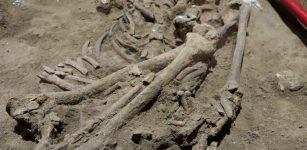 31,000-Year-Old Skeleton Missing Foot May Show Oldest Amputation
Archaeology | Sep 7, 2022
31,000-Year-Old Skeleton Missing Foot May Show Oldest Amputation
Archaeology | Sep 7, 2022 -
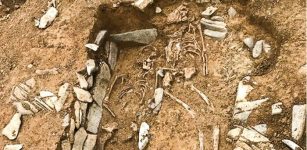 Skeleton Of An Ancient Roman Mercenary Buried With His Sword Discovered In South Wales
Archaeology | Apr 6, 2022
Skeleton Of An Ancient Roman Mercenary Buried With His Sword Discovered In South Wales
Archaeology | Apr 6, 2022

